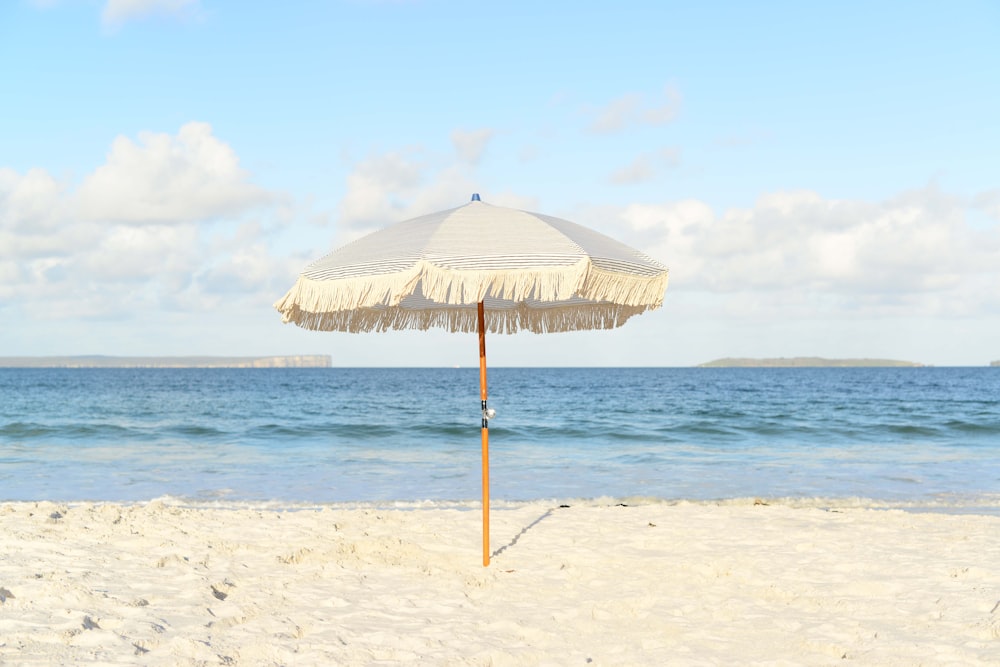
Beach workouts are a fantastic way to stay fit in the summer, for many reasons. For one thing, you tend to burn extra calories when you’re exercising on the beach. Why? Because when there’s sand beneath your feet instead of level flooring, your muscles are forced to become more engaged. The resistance from the sand acts as an extra challenge for your muscles. It requires you to exert more effort and work harder, and you end up burning more calories. Whether you’re walking, running or doing strength exercises such as push-ups on the sand, exercising on sand activates your muscles more effectively.
People use beach training to get fit all the time because the sand helps strengthen their stabilizer muscles. If you’re new to working out in the sand, start yourself off on wet or damp sand, as it’ll be firmer and create less resistance than loose, dry sand. You can work yourself up to the more challenging dry sand workouts.
If your muscles aren’t used to the added difficulty of the sand’s weight and resistance, you could get quite sore if you don’t ease yourself into it. In other words, if you’re not used to exercising on the sand, modify your workout. Don’t do everything as intensely as you would at the gym or on hard ground.
Enjoy the Scenery

Another reason people love to work out at the beach is because of the beautiful scenery and the fresh ocean air. It’s also a great idea to get more vitamin D from exercising in the sunshine, but just remember to wear a hat and sunscreen. An added bonus of beach workouts is that you don’t have to pay for a gym membership, and you don’t even really need any workout equipment. Most of the best beach workouts require zero equipment.
In general, exercising outside among nature is linked to happiness and stress reduction. Spending more time in nature has been scientifically linked to a better overall mood. Below are some of the best beach workouts to help you get fit this summer:
Side Shuffle Down the Beach
Also known as lateral shuffles, side shuffles are a very effective beach workout. Side shuffles work your thighs, calves and glutes while engaging your core. It’s also a great form of cardio to perform along a stretch of beach.
To do a side shuffle, stand in the sand with your knees bent and your feet hip-width apart. Look forward with your chest up, and shuffle right in a low, knee-bent position. Use your leg muscles to push your body laterally. Once you’ve shuffled right for a stretch of time, you can turn your body and start shuffling left.
Sand Bucket Deadlifts
The deadlift is a staple to any exercise routine. This exercise involves lifting a weight from the ground by bending at your waist and hinging at the hips, then standing back up lifting the weight. To stand back up while lifting the weight, you’ll be using your back muscles, hamstrings, quadriceps, glutes and core. While gripping the weight, you’ll keep your knees bent and hinge at the hips. To ensure proper form (especially proper spine alignment) it’s best to watch a YouTube demonstration of a deadlift.
Bring a kid’s sand bucket and fill it with sand to use as a weight for your deadlift. Hold the bucket with both hands and keep it as close to your body as possible as you bend at the waist to lift and lower it. One rep is complete once you’ve lifted the bucket at your feet in the sand and returned to a standing position. Do 12 repetitions, three times as part of your beach workout circuit.
Beach Water Running

Along the edge of the beach where the ocean water flattens out, you can go for a run with the water hitting you somewhere between ankle and knee height.
The ocean water at the shoreline adds the extra challenge of added resistance. The deeper the water, and the closer it is to hit your knees, the higher you’ll have to lift your knees as you run. This creates a fantastic workout, but it’s challenging, so be sure to stretch and do a proper warm-up before your beach water run. Some people run barefoot if the shoreline is smooth, and others simply wear a pair of old running shoes to do their beach water runs. Try to perform this exercise for 20 minutes if you can.
Squat Jumps
Squat jumps are normally tough on your knees and joints if you land on hard ground without anything to absorb the impact of your weighted landing. However, the sand softens that impact, and squat jumps are therefore a fantastic addition to your beach workout.
Stand with your feet shoulder-width apart, in a low squat position. Activate your core, glutes and leg muscles to jump up, and ensure that you land in a squat position. Repeat squat jumps for 15 reps, and do three sets with breaks in between.
You can either do a squat jump in place, or propel yourself forward as you jump, and land in a squat about 2 feet in front of you. Either way, this is a great exercise made even more effective with the sand’s resistance under your feet.
Walk-Outs into a Push-Up

Start in a standing position. Bending at the hips, place your hands on the sand in front of you shoulder-width apart, a couple of inches in front of your feet.
Walk your hands forward until your body straightens and is now in a pushup position. Once you do a pushup, walk your hands back towards your feet and return to a standing position. Repeat 10 times, for a set of three repetitions. This exercise works your core, chest, shoulders and triceps. Your hamstrings even have to work to help you return to a standing position. The sand’s resistance forces your arm muscles to work harder and engage more while you perform a push-up. All in all, the walk-out push-up is a great beach workout that requires no equipment.
Beach Crawl
Beach crawls in the sand are surprisingly challenging. Begin in a plank position with your arms fully extended. Then, start slowly crawling forward in the sand like a bear, using your feet and extended arms.
This exercise is often referred to as a “bear crawl” and although it may look humorous to other beachgoers, there’s nothing funny about how to fit you can get doing this exercise regularly.
For best results, reach forward with alternating hands and feet. As you reach your left hand forward in the sand, draw your right knee toward your right hand, keeping the hips low and your core engaged. Repeat with the opposite hand and knee and continue moving forward in the sand, alternating and keeping the core tight.
Conclusion

Although the soft sand has more shock absorption than a floor and therefore can be gentler on your joints in terms of impact, it’s also possible to accidentally injure yourself by working out in the sand. This is more of a risk for those who have existing knee injuries, hip problems, weak ankles or a history of ankle sprains, all of which can be exacerbated by exercising on soft and unstable sand. Also, if you’re used to working out on the hard ground, you are at higher risk of muscle strains since your stabilizing muscles are probably not that strong yet.
Working out on the sand is more challenging than it looks, but the hard work pays off since the above beach workouts are very effective.
If you want to know what your optimal exercise routine is based on your genetics, order your CircleDNA kit today.







This Post Has One Comment
Comments are closed.